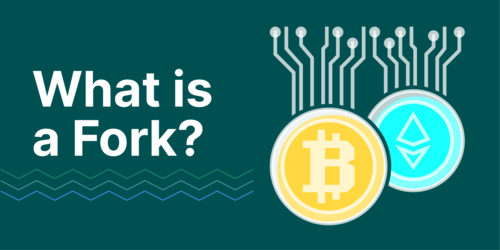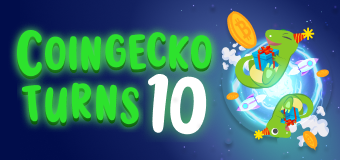Crypto moves fast, extremely fast. Terra is a showcase of just how fast the industry moves. Within a couple of weeks, Terra has gone from being the decentralized stablecoin of choice, to collapsing in a matter of days, to rising from the ashes as a transformed blockchain.
Days after the death of UST and LUNA, the founder of Terra, Do Kwon announced a comeback plan. However, instead of salvaging the previous chain, an entirely new Terra network would be launched. This time round though the chain wouldn’t be centered around UST. Instead, the algorithmic stablecoin would be totally discarded, with no plans for its introduction to the new blockchain. Kwon argued that “Terra is more than UST,” and with that published a governance proposal titled “Terra Ecosystem Revival Plan 2”.
The governance proposal went through with much ease, having 65.50% in favor, 13.20% opposing it, and 20.98% abstaining from voting. While the vote went through, many on public forums and Twitter were opposed to a new blockchain. Some advocated for the burning of LUNA tokens and UST. However, Kwon was quick to point out that this was not possible as such tokens are owned by investors and not Terra. Now, with the governance vote going through, it has paved the way for the new network to launch and for new LUNA tokens to be airdropped to affected holders of USTC and LUNC (original UST and LUNA).
Terra 2.0, dubbed Phoenix-1 (to represent its rise from the ashes) has since gone live, with blocks being produced. LUNA tokens have also been airdropped to affected investors. Meanwhile, the old chain has been rebranded to Terra Classic with LUNA changing its ticker to LUNC. UST still exists on the old chain, though it is no longer a stablecoin and is now called Terra USD Classic (USTC).
Terra 2.0 Airdrop
The new supply of 1 billion LUNA tokens was airdropped to the community as in the table below. ~116 million LUNA will be the initial circulating supply, amounting to ~12% of total supply. The pre and post-attack snapshot was taken on 7 May 22:59:37 and 27 may 00:38:08 (+08:00) respectively.
The amount of LUNA airdropped to users was determined by the types of tokens held (i.e. aUST, UST (USTC), LUNA (LUNC) and its staking derivatives) and the time-period (pre or post-attack) of the holdings. For small wallets with <1 LUNA airdrop allocation, the airdrop is instead directed to the community pool.
 Terra 2.0 LUNA airdrop allocation. Source: Terra Medium
Terra 2.0 LUNA airdrop allocation. Source: Terra Medium
The airdrop prioritized smaller LUNA and UST holders, with those holding >10k LUNA pre-attack not receiving any liquid tokens until a year later, and whales with >1 million LUNA having longer vesting schedules. For more details regarding the airdrop, check out the two blog posts by Terra: LUNA Airdrop & LUNA Airdrop Calculation Logic.
However, several issues have arisen in regards to the airdrop, where users of some projects like Stader or Pylon Protocol have reported receiving incorrect amounts of their allocation, or none at all.
 LUNA price & volume chart. Source: CoinGecko.
LUNA price & volume chart. Source: CoinGecko.
Upon launch, the price of LUNA dumped >75% within the first 5 hours from ~$18.9 to ~$4.4, before finding a floor around the $5-6 level. This is unsurprising as airdropped tokens tend to experience sell-offs immediately or shortly after launch, and in this case users have even more reason to do so in efforts to recoup the losses incurred from USTC and LUNC. It has since recovered slightly and is trading at ~$8.6 at time of writing.
Overwhelming Support
Terra 2.0 has been met with overwhelming support from projects which were native to Terra as well as exchanges.
Various TeFi (Terra Finance) projects have pledged their support to the new chain, from exchanges, money markets, and even NFT projects. Some notable names:
- Astroport
- Prism
- Spectrum Protocol
- Nebula
- RandomEarth
- Aperture Finance
- Stader Labs
- Sigma Finance
Astroport, which quickly became the leading decentralized exchange (DEX) on Terra when it first launched last year, will be launching on Terra 2.0 as well. While Delphi, which runs Astroport, doesn't have strong conviction in Terra 2.0, it will still launch the DEX on the new chain due to community consensus. Unfortunately, Mars Protocol (also incubated by Delphi) will not launch for now due to insufficient liquidity in native assets on the new network.
However, not all Terra projects will be relaunching on the new chain, and have instead opted to redeploy on other Cosmos networks. Money market Apollo DAO doesn’t intend to deploy on Terra 2.0 in the meantime, and will instead launch on various other Cosmos blockchains. Tracer, a move-to-earn game that was geared towards launching on Terra has instead moved to Near Protocol. Competitor chains such as BNB Chain as well as Secret Network have set up funds to support any Terra projects which decide to move to their respective chains.
There are also a group of Terra projects which haven’t made a clear stance on whether to move to the new chain, or to abandon it. The two biggest Terra projects: Anchor and Mirror haven’t made any comments on their plans, but it is unlikely they will launch in their previous form which relied heavily on UST. Staking service Lido will also not support Terra 2.0 for now.
Major centralized exchanges have also pledged to support Terra 2.0. At the time of writing, the majority of exchanges which had the old LUNA listed, already support the new LUNA token. These include:
- Binance
- Huobi
- FTX
- Kucoin
- Bybit
- Bitfinex
- Kraken
- Gate.io
- Bitrue
- OKX
- MEXC
While much support was garnered, there were some opposed to it as well. One significant opposition came in the form of the Wormhole bridge which saw its guardian governance vote to support Terra 2.0 fail. The Wormhole bridge on Terra Classic was by far the bridge with deepest liquidity and volume. However, this may not be the end of the Wormhole bridge as a second guardian governance vote may come into play down the road. With the lack of a bridge, the only way to move in and out of Terra 2.0 is via centralized exchanges which support LUNA.
What happens to Terra Classic?
With the majority of protocols, talent, and liquidity set to move to Terra 2.0, it is unlikely that any sort of development will continue on Terra Classic. Unlike Ethereum Classic which continues to be supported by miners who validate the network via Proof of Work (PoW), there are no longer any rewards being given to validators / stakers on Terra Classic.
In the meantime though, there are certain proponents out there advocating for the burning of LUNC. The LUNC DAO is a validator on Terra 2.0 that is using its commissions to purchase LUNC back from the market and subsequently burn them. How long this will last, or whether it will gain traction remains to be seen.
Closing Thoughts
While Terra gets to see another chapter as Terra 2.0, it’s difficult not to share the bearish sentiments of many other crypto veterans in the space. Even previously outspoken supporters of Terra from LFG / Delphi Digital have expressed their doubts about the new chain. While Do Kwon's proclamation that “Terra is more than UST'' could be true, it is a matter of objective fact that its native token LUNA (LUNC) was intrinsically linked to UST (USTC), and the focal point in terms of Terra’s marketing and growth was the offering of a decentralized and scalable stablecoin.
The promise of Terra’s vision of decentralized money and meteoric rise of UST undoubtedly attracted innovative builders and ardent supporters of the project. Unfortunately, the LUNA-UST model has proven itself irredeemably flawed, and a categorical move forward would require a rewrite of the entire value proposition of the project. Even once thriving communities can shift allegiances or simply die off - and as mentioned earlier we already see some project teams leaving for other ecosystems. Without UST or any other distinctively unique strengths, Terra is simply another Cosmos L1 appchain but with the heavy baggage of its past and controversial leader on its shoulders.
To Terra’s credit, dApps on the chain had a very clean and friendly UI, with fast and cheap transactions. Its decoupling with UST may in itself be an advantage as many alt-L1 chains have managed to attract a sizable user base given the presence of interesting projects / lively communities. A positive note for now is that many Terra Classic projects have shown support for the new chain, and will deploy their dApps on Terra 2.0. However, any further fragmentation or loss of conviction in its community and developer base will prove another obstacle to Terra 2.0 regaining any of its former dominance.
In addition to those who continue to truly support Terra 2.0, a reasonable guess is that there are many investors stuck in the ecosystem, perhaps suffering from sunk-cost fallacy / Stockholm syndrome, who understandably wish to see losses recouped in some way. However, it is okay to admit mistakes and change our investment theses. In crypto and many other things in life, we adapt or we die. For anyone who opts to stick with Terra 2.0, do so with genuine conviction and not blind hope that this fundamentally different project would be able to return to its past glories.
This article was produced in collaboration with Wendy. You can follow her on Twitter here.

Shaun is a Research Associate at CoinGecko with a fondness for memes and farming on the blockchain. Follow the author on Twitter @ShaunPaulLee









 Or check it out in the app stores
Or check it out in the app stores